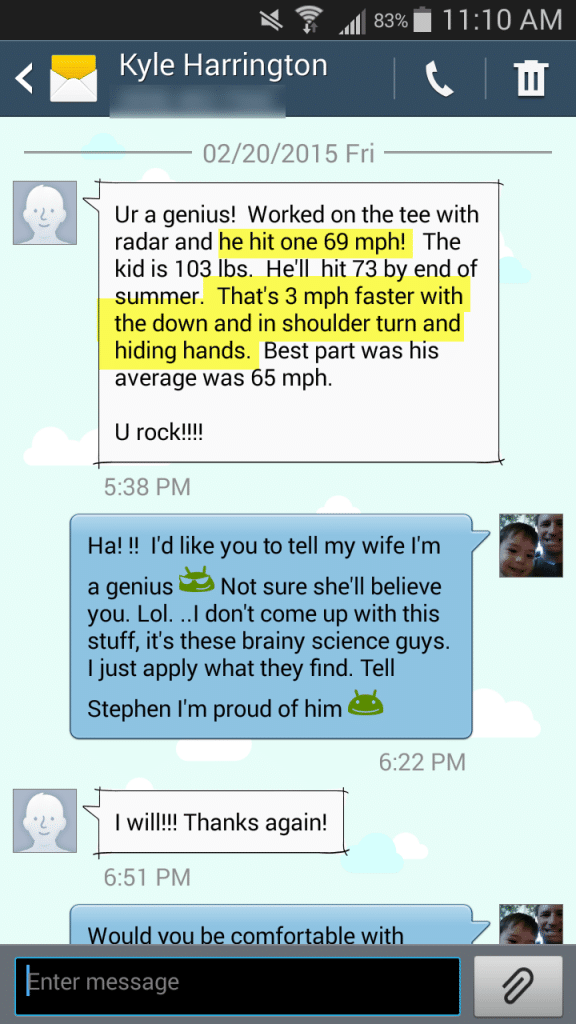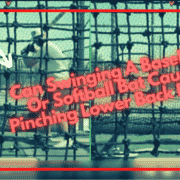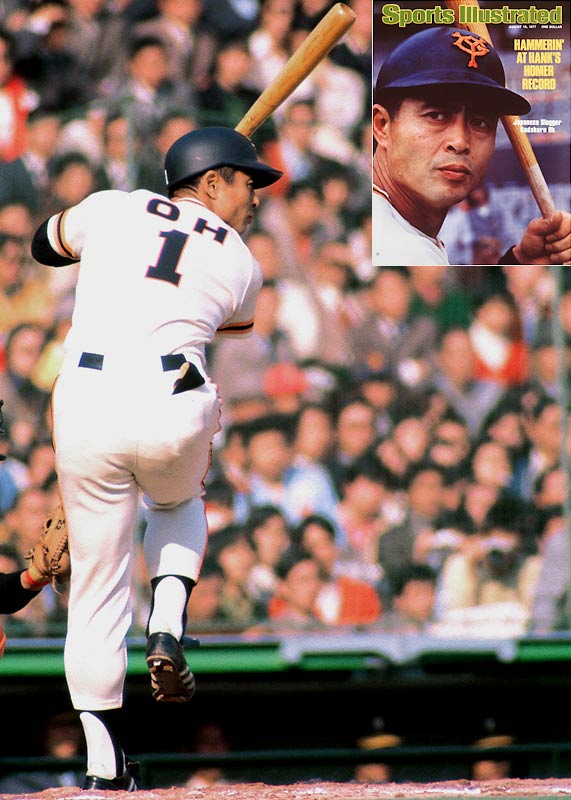Discover an online hitting lessons swing science program for baseball and softball players. Learn where to find a remote hitting instruction coach to teach kids how to increase bat speed and power.
Batting Cages May Be Dangerous To Repeatable Power
I know you what you’re thinking, “Okay, so what’s wrong with hitting at the batting cages?”
We’ll get to that, but before we do, let me set the stage for what I’m about to share with you. A glimpse into an online hitting lesson I gave to my hitter Stephen at The Feedback Lab.
I was granted permission from Kyle (Stephen’s dad), to share his 12-year-old son’s latest online hitting session with me. They’re out of New Jersey…
What Was To Be Corrected
- Hiding his hands from the pitcher
- “Downhill” shoulder angle pre-turn, and
- Maintaining 90-degree back leg angle during turn and finish.
Stephen 2-Months Later…
In the above video, I mentioned the difference between comparing a swing off the tee versus at the batting cages. It’s not really an apples to apples comparison, BUT if they can repeat what we’re trying to get them to do off a tee, then the feeling to repeat it is there. Here’s what his analysis showed:
- Great downhill shoulder angle,
- Much better with hiding his hands from the pitcher (could polish a little here), and
- Much better body angle on his finish.
3-Points Worth Noting…
- Dad had mentioned to me, in the past 2-months, that they’ve been testing hand, butt, and hamstring tension, which might have also had an effect on Stephen’s outcomes.
- Stephen will be working on a better barrel launch angle using variance training mentioned in the above video. Pay attention to the Bat Angle Experiment I referenced in the video.
- I give feedback based on Tony LaRussa’s “Pat & Pop Method”. First give a “pat” on the back (what they did or are doing well), then reveal the “pop” (what they’ll be working to improve their swing).
Coaches, this is critical!! Athletes don’t just need to be broken down all the time. Build them up first, then offer up the constructive criticism.
The Danger in Batting Cages
And I’m not talking about Happy Gilmore style…
Someone smart once said:
“Practice like you play, so you play like you practice.”
Most coaches have their players do what’s referred to as “massed practice” versus “training ugly” at the batting cages. For example, if you needed work on hitting off speed and breaking pitches, a massed practice would look like the following scenario…a pitcher throws each hitter:
- 15 fastballs, then
- 15 curve-balls, and
- Lastly 15 change-ups…
But this isn’t what it’s like in the game. The hitter rarely knows, with 100% certainty, which pitch, speed, and location they’re getting. So practice MUST reflect this dynamic in training. And hitting at the batting cages limits the amount of variance we can work into our practice.
I do a few things with my more advanced hitters (mechanically speaking), to mix things up:
We may not practice all these at once. Coaches, our objective with our hitters is to move them to the verge of “meltdown” with variance. Then bring them back. Then rebuild. The other thing is, during batting practice, the tendency is to take rounds of 10, 20, and 30+ to get a hitter’s timing and rhythm down. This IS NOT good. This is marathon training. Hitting is more like sprint training. Rounds of 3-6 swings is more like it – with 30+ seconds to rest between rounds.
I hope this helps!







